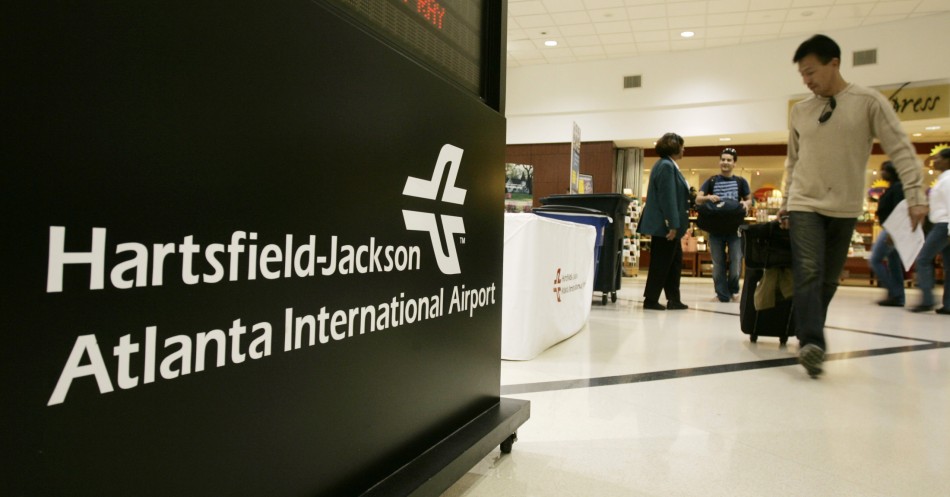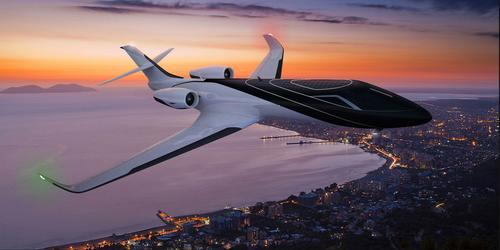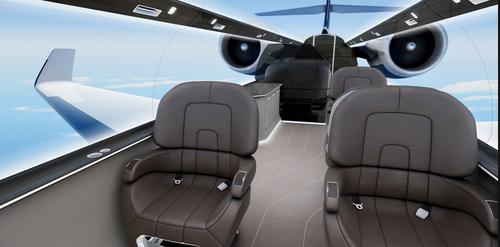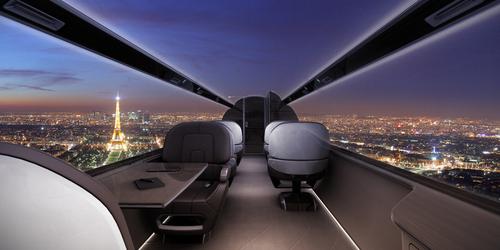follow me
Friday, 5 December 2014
Thursday, 11 September 2014
13 Years ago on the 11th September 2011 one of the worst tragedies ever took place in the USA. Between 8:46 and 9.03 a clock the flights AA11 and UA157 crashed into both towers of the World Trade Center after they got Hijacked by the terror group Al Qaida. At 9.37 local time flight AA77 crashed into the Pentagon. At 10.03 local time the flight UA93 crashed on a field after it also got Hijacked by Al Qaida. The target of that was probably the White House but the passengers were able overwhelm the Hijackes and brought it to crash on the field. On the flights AA11 UA157 AA77 UA93 and inside the World Trade Center died all in all 3000 people.
Lets commemorate to all victims on that tragedy. Lets also thank the helpers which tried to save so much lives as they coul, and also that people on flight UA93 which gave their live to protect their president!
May all their souls rest in peace!

Lets commemorate to all victims on that tragedy. Lets also thank the helpers which tried to save so much lives as they coul, and also that people on flight UA93 which gave their live to protect their president!
May all their souls rest in peace!

Monday, 1 September 2014
Friday, 29 August 2014
Iceland issues aviation alert after eruption
REYKJAVIK, Iceland (AP) — Iceland authorities say there's been a small fissure eruption near Bardarbunga volcano, but no volcanic ash has been detected by the radar system.
The eruption took place early Friday morning in the Holuhraun lava field, north of Dyngjujökull glacier, Iceland's Meteorological Office said.
It says the aviation alert code has been changed to red, the highest level, but any ash produced has so far been minimal and all airports in Iceland are open. Icelandic Air Traffic Control has closed down the airspace from the ground up to 18,000 feet (5,486 meters).
In 2010, Iceland's Eyjafjallajokul volcano erupted and sparked a week of international aviation chaos, with thousands of flights canceled. Aviation officials closed Europe's air space for five days, fearing that volcanic ash could harm jet engines.

The eruption took place early Friday morning in the Holuhraun lava field, north of Dyngjujökull glacier, Iceland's Meteorological Office said.
It says the aviation alert code has been changed to red, the highest level, but any ash produced has so far been minimal and all airports in Iceland are open. Icelandic Air Traffic Control has closed down the airspace from the ground up to 18,000 feet (5,486 meters).
In 2010, Iceland's Eyjafjallajokul volcano erupted and sparked a week of international aviation chaos, with thousands of flights canceled. Aviation officials closed Europe's air space for five days, fearing that volcanic ash could harm jet engines.

Saturday, 23 August 2014
The world’s most frequent flyer
Tom Stuker has taken the term "frequent flyer" to completely new heights this year, logging just over 1.000.000 miles in 2012 all on United, all in first class. Generally, he has travelled over 10 million miles. The 59-year-old Chicago native and New Jersey resident says he's flown a total of 13 million miles, much of that in his capacity as an independent consultant and sales trainer for automobile dealerships around the world.

The average age of a commercial aircraft
The lifespan of an airliner is not truly measured in time. Instead, it is counted based on pressurization cycles. Each time an aircraft is pressurized during a flight its fuselage is subjected to stress. The "lifespan" of an aircraft is reached when there are certain metal fatigues and cracks which may pose danger. The "service life of 20 years" is generally expressed by approximate figures of 51,000 flight hours and 75,000 pressurization cycles for most aircraft. If an aircraft is used on long haul routes it experiences relatively few pressurization cycles in its "life" and can remain airworthy far beyond 20 years.

Only 5% of the world’s population have ever been on an airplane
Though the aviation sector is growing rapidly, according to the statistics only 5% of the world's population has ever flown on an airplane. Many people, especially from the underdeveloped regions, have never ever been in an aircraft and it is not likely that they will have an opportunity to fly in all of their lives. However, at the same time a small minority of the world's population fly very regularly.

The speed of a Boeing 747
Boeing 747 is not only one of the world's most recognizable aircraft, and the first wide-body ever produced. Another fascinating fact about this aircraft is that the maximum speed of a Boeing 747 is 955 km/h.

The world’s busiest commercial airport
The busiest commercial airport in the world is the Hartsfield- Jackson Airport (ATL) in Atlanta, with more than 970.000 airplane movements a year. Based on its passenger traffic this airport has been the busiest from 1998, and by the number of landings and take-offs - since 2005. The Hartsfield–Jackson has held its ranking as the world's busiest airport in 2012, too, both in terms of the number of passengers and the number of flights. In the year alone it was visited by95 million passengers (more than 260,000 passengers daily).

Each engine on a Boeing 747 weighs almost 9,500 pounds
Another interesting fact about a Boeing 747 concerns its engine weight. This aircraft is one of the most popular and beautiful airliners in the sky. A Boeing 747 is made up of six million parts and one of them is its engine which weighs almost 9,500 pounds (4,300 kg) and costs about 8 million USD.

More than 80% of the population is afraid of flying
Acrophobia is defined as a fear of heights. Unlike a specific phobia like aerophobia - fear of flying -and other specific phobias, acrophobia can cause a person to fear a variety of things related to being far from the ground. Depending on the severity of the phobia, an acrophobic person may equally fear being on a high floor of a building or simply climbing a ladder.

A Boeing 747 is made up of six million parts
Boeing 747 is the most well known wide-body commercial airliner and cargo transportation aircraft frequently referred to as the Queen of the Skies or the Jumbo Jet. This airplane is famed because it was the first huge body aircraft ever produced. A Boeing 747 is made up of six million parts which are made to be all controlled by a few pilots sitting up front with switches and buttons under their fingertips.


Fly non-stop for five years! Insane!! - Solar-Powered Drone
Fly non-stop for five years! Insane!! - Solar-Powered Drone
Though many people immediately associate unmanned drones with military use or some kind of dubious espionage activity, but they have incredible potential to be used in a wide variety of peaceful and scientific applications. In addition to delivering supplies to disaster-stricken areas, drones could be used to gather information about things like weather and wildlife.
Titan Aerospace is currently developing a drone named Solara 50 that is being hailed as an “atmospheric satellite” and has quite a lot to offer in terms of gathering scientific data. The drone will fly at an altitude of over 19,000 meters (65,000 feet) where there is little air traffic and above most weather that could impede its travels. Flying at that height will also give it unobstructed access to the sun, which will power the 3,000 solar cells that cover its 50-meter-long (164 feet) wings. The solar cells will also charge lithium ion batteries stored inside the wing so it can fly at night, which means that this drone can fly uninterrupted for up to 5 years all while producing zero emissions.
The body of the drone is durable carbon fiber, and the 5-kilowatt electric motor will allow the aircraft to cruise at about 96 km/h (60 mph). Though the aircraft itself weighs only 160 kg (350 lbs), it will be able to carry 32 kg (70 lbs) worth of payload up into the stratosphere.
Solara 50 is completely self-piloted; able to take off, cruise, and land on its own. It will function much the same way as a satellite, though it will cost much less to launch. From the air, it would be able to track developing storms, migrating wildlife, vegetation patterns, and it would also have data communications capabilities; a feature that has caught the eye of the social media giant, Facebook.

Facebook would use the drones to bring the internet to the 5 billion people around the globe who aren’t online as part of the Internet.org initiative. They are interested in acquiring Titan Aerospace for an estimated $60 million. If it goes through, Facebook will launch 11,000 units to start, which would be used to connect rural regions in Africa to the rest of the world. This is a similar—yet more sophisticated—concept as Google’s Project Loon, which had the same internet connectivity goals in mind though it utilized weather balloons instead of precision-guided drones.
If Facebook does acquire Titan Aerospace and all of its drone technology, all of the units produced will be used to further Internet.org’s goals.
Though many people immediately associate unmanned drones with military use or some kind of dubious espionage activity, but they have incredible potential to be used in a wide variety of peaceful and scientific applications. In addition to delivering supplies to disaster-stricken areas, drones could be used to gather information about things like weather and wildlife.
Titan Aerospace is currently developing a drone named Solara 50 that is being hailed as an “atmospheric satellite” and has quite a lot to offer in terms of gathering scientific data. The drone will fly at an altitude of over 19,000 meters (65,000 feet) where there is little air traffic and above most weather that could impede its travels. Flying at that height will also give it unobstructed access to the sun, which will power the 3,000 solar cells that cover its 50-meter-long (164 feet) wings. The solar cells will also charge lithium ion batteries stored inside the wing so it can fly at night, which means that this drone can fly uninterrupted for up to 5 years all while producing zero emissions.
The body of the drone is durable carbon fiber, and the 5-kilowatt electric motor will allow the aircraft to cruise at about 96 km/h (60 mph). Though the aircraft itself weighs only 160 kg (350 lbs), it will be able to carry 32 kg (70 lbs) worth of payload up into the stratosphere.
Solara 50 is completely self-piloted; able to take off, cruise, and land on its own. It will function much the same way as a satellite, though it will cost much less to launch. From the air, it would be able to track developing storms, migrating wildlife, vegetation patterns, and it would also have data communications capabilities; a feature that has caught the eye of the social media giant, Facebook.

Facebook would use the drones to bring the internet to the 5 billion people around the globe who aren’t online as part of the Internet.org initiative. They are interested in acquiring Titan Aerospace for an estimated $60 million. If it goes through, Facebook will launch 11,000 units to start, which would be used to connect rural regions in Africa to the rest of the world. This is a similar—yet more sophisticated—concept as Google’s Project Loon, which had the same internet connectivity goals in mind though it utilized weather balloons instead of precision-guided drones.
If Facebook does acquire Titan Aerospace and all of its drone technology, all of the units produced will be used to further Internet.org’s goals.
How does winglets work?
There are many factors which influence the amount of aerodynamic drag which a body generates. Drag depends on the shape, size, and inclination, of the object, and on flow conditions of the air passing the object. For a three dimensional wing, there is an additional component of drag, called induced drag, or drag due to lift. On modern airliners, the wing tips are often bent up to form winglets. Winglets were wind tunnel tested and computer analyzed by Richard Whitcomb of the NASA Langley Research Center in the mid 1970's.
Induced drag is a three dimensional effect related to the wing tips; induced drag is a wing tip effect. So if the wing tip represents only a small fraction of the total wing area, the induced drag will be small. Long thin wings have low induced drag. Wings with an elliptical planform also have lower induced drag than rectangular wings. For many years, wing designers have attempted to reduce the induced drag component by special shaping of the wing tips. The Wright Brothers used curved trailing edges on their rectangular wings based on wind tunnel results. The outstanding aerodynamic performance of the British Spitfire of World War II is partially attributable to its elliptic shaped wing which gave the aircraft a very low amount of induced drag.
The idea behind the winglet is to reduce the strength of the tip vortex and therefore cause the flow across the wing to be more two-dimensional. Flight tests at the NASA Dryden Flight Research Center have found a 6.5% reduction in the fuel use of a Boeing 707 type airliner when using winglets. Winglets must be carefully integrated into the total wing design, which explains why many different winglet designs appear on various airliners.
For a wing, the total drag coefficient, Cd is equal to the base drag coefficient at zero lift Cdo plus the induced drag coefficient Cdi.
Cd = Cdo + Cdi
The drag coefficient in this equation uses the wing area for the reference area. Otherwise, we could not add it to the square of the lift coefficient, which is also based on the wing area
Thursday, 14 August 2014
The Future of Airplanes Could Be a Windowless Jet

An exterior view of the Ixion windowless jet. (Photo: Technicon Design)

Cameras on the wings display a panoramic view on the interior screens. (Photo: Technicon Design)

Who needs windows with a view like this? (Photo: Technicon Design)
The Future of Airplanes Could Be a Windowless Jet

Would you fly in a windowless plane? It sounds like a claustrophobic nightmare, but it’s not what you think.
Instead of windows, designers from Technicon Design used flexible screens to cover the walls and ceilings of the cabin in their windowless jet concept. Those screens can display panoramic exterior views in real time using fuselage and wing mounted cameras. Essentially, you can see outside without actually seeing outside.
This feat in aviation is named the Ixion windowless jet, and it was unveiled by Technicon at the National Business Aviation Association (NBAA) show. “I challenged the team to break out of conventional thinking with regards to a business jet exterior and interior,” said Gareth Davies, design director at the Technicon Design Studio in France. “Whilst defining the concept sketches for the exterior, I asked the rest of the team to start thinking about interior concepts and what we could do differently.”
And, boy, did they do something differently. In addition to displaying the current exterior environment, the screens can also be programmed to show any scenery you’d like. So as you fly, you can adjust the theme and mood to feel as if you’re in a rainforest, in Paris, or even in space. The technology also allows for onscreen display, meaning that in-flight video conferencing would be possible as well.
The jet uses existing or very near future technology, so you won’t be seeing it on runways for a bit longer. Still, this futuristic concept makes you think of what can come next. Anyone up for a windowless car?
Wednesday, 13 August 2014
The new Airbus A350

The A350 XWB offers Extra space with the overhead stowage space for 2 roller-bags per passenger in business class.
The new Airbus A350

The A350 has carbon fibre fuselage and wings and sets new standards in terms of passenger experience, operational efficiency and cost-effectiveness.
Tuesday, 12 August 2014
List of the busiest airports in Asia
2011 Statistics (Full-year preliminary)
| Rank | Country | Airport | City | IATA/ICAO Code | Total passengers | Change |
|---|---|---|---|---|---|---|
| 1. | People's Republic of China | Beijing Capital International Airport | Beijing | PEK/ZBAA | 77,403,668 | |
| 2. | Japan | Haneda Airport | Tokyo | HND/RJTT | 62,263,025 | |
| 3. | Hong Kong | Hong Kong International Airport | Hong Kong | HKG/VHHH | 53,314,213 | |
| 4. | Indonesia | Soekarno–Hatta International Airport | Jakarta | CGK/WIII | 52,446,618 | |
| 5. | United Arab Emirates | Dubai International Airport | Dubai | DXB/OMDB | 50,977,960 | |
| 6. | Thailand | Suvarnabhumi Airport | Bangkok | BKK/VTBS | 47,910,744 | |
| 7. | Singapore | Singapore Changi Airport | Singapore | SIN/WSSS | 46,543,845 | |
| 8. | People's Republic of China | Guangzhou Baiyun International Airport | Guangzhou | CAN/ZGGG | 45,040,340 | |
| 9. | People's Republic of China | Shanghai Pudong International Airport | Shanghai | PVG/ZSPD | 41,450,211 | |
| 10. | Malaysia | Kuala Lumpur International Airport | Kuala Lumpur | KUL/WMKK | 37,670,586 |
 |
| Terminal 3 Air Control Tower(Beijing Capital International Airport) |
Subscribe to:
Comments (Atom)





















